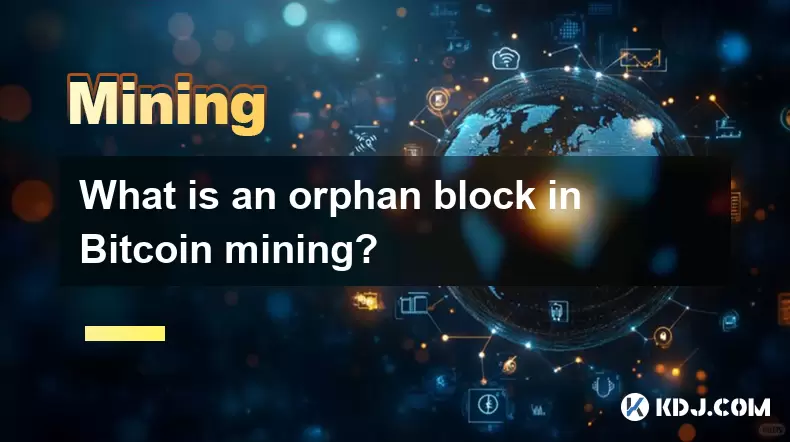-
 Bitcoin
Bitcoin $119,161.9671
1.52% -
 Ethereum
Ethereum $2,995.0722
2.34% -
 XRP
XRP $2.8555
5.32% -
 Tether USDt
Tether USDt $1.0002
0.00% -
 BNB
BNB $692.9308
1.48% -
 Solana
Solana $162.9611
1.87% -
 USDC
USDC $0.9999
0.00% -
 Dogecoin
Dogecoin $0.2014
2.84% -
 TRON
TRON $0.3032
0.90% -
 Cardano
Cardano $0.7464
6.51% -
 Hyperliquid
Hyperliquid $49.1533
5.71% -
 Stellar
Stellar $0.4773
24.77% -
 Sui
Sui $3.4979
3.93% -
 Chainlink
Chainlink $15.8552
6.01% -
 Hedera
Hedera $0.2401
23.85% -
 Bitcoin Cash
Bitcoin Cash $510.0474
0.97% -
 Avalanche
Avalanche $21.5550
4.82% -
 UNUS SED LEO
UNUS SED LEO $9.0389
-0.47% -
 Shiba Inu
Shiba Inu $0.0...01340
2.27% -
 Toncoin
Toncoin $2.9910
0.62% -
 Litecoin
Litecoin $96.4406
4.34% -
 Polkadot
Polkadot $4.0359
4.59% -
 Monero
Monero $338.4759
2.80% -
 Uniswap
Uniswap $8.6460
4.01% -
 Dai
Dai $0.9999
0.00% -
 Ethena USDe
Ethena USDe $1.0007
0.03% -
 Pepe
Pepe $0.0...01254
3.26% -
 Bitget Token
Bitget Token $4.3969
0.79% -
 Aave
Aave $312.2641
3.98% -
 Bittensor
Bittensor $397.0731
4.17%
What is an orphan block in Bitcoin mining?
Orphan blocks are valid Bitcoin blocks that get discarded when another block is added to the chain first, causing miners to lose rewards and fees.
Jul 13, 2025 at 11:56 pm

Understanding the Concept of Orphan Blocks
In the world of Bitcoin mining, the term orphan block refers to a valid block that has been successfully mined but is ultimately discarded from the main blockchain. This occurs when two miners simultaneously solve the cryptographic puzzle required to add a new block to the chain. Since Bitcoin’s decentralized nature allows for this possibility, the network must resolve such conflicts by selecting only one block to remain on the longest valid chain.
The discarded block becomes an orphan because it does not get included in the primary version of the blockchain recognized by the majority of nodes. Although these blocks are valid and meet all consensus rules, they lose out due to timing and propagation delays across the network.
How Are Orphan Blocks Created?
Orphan blocks come into existence due to network latency and synchronization issues between miners. When two or more miners independently find a valid block at roughly the same time, the network receives these blocks at different times depending on geographical location and connection speed.
Each node initially accepts the first block it receives. However, once a subsequent block is added on top of one of these competing blocks, the network recognizes that chain as the longest valid chain and abandons the other. The abandoned block then becomes an orphan block.
It's important to note that modern Bitcoin clients label such blocks as "stale" rather than orphan. Despite this terminology shift, the underlying phenomenon remains unchanged — only one chain can be considered canonical at any given time.
Technical Characteristics of Orphan Blocks
An orphan block retains its validity in terms of proof-of-work and transaction data. It includes:
- A valid block header
- A correct nonce value
- Proper Merkle root hash
- Valid transactions that do not conflict with prior blocks
However, because it isn't built upon by subsequent blocks, it doesn't contribute to the finality of transactions. The miner who produced the orphan block does not receive the block reward or transaction fees associated with it, making orphaning a financial loss for the miner involved.
The probability of producing an orphan block increases with faster block propagation speeds, which is why mining pools and relay networks have developed technologies like FIBRE (Fast Internet Bitcoin Relay Engine) to reduce such occurrences.
Impact of Orphan Blocks on Miners
For individual miners or mining pools, orphaned blocks represent lost revenue. Each time a block gets orphaned, the miner forfeits both the block subsidy (currently 6.25 BTC per block) and the transaction fees collected within that block.
This makes orphan rates a critical metric for evaluating mining efficiency. Mining pools often track their orphan rates and optimize infrastructure to minimize them. High orphan rates may indicate poor connectivity, outdated software, or suboptimal network positioning.
Miners can mitigate the risk of orphaning by joining larger pools or using low-latency connections to major nodes. Additionally, block compression techniques and compact block relay help ensure faster dissemination of newly mined blocks.
Historical Examples of Orphan Blocks
While orphan blocks are relatively rare in today’s well-connected Bitcoin network, they were more common during the early days of Bitcoin when network infrastructure was less mature. In 2010 and 2011, multiple orphan events occurred due to slower block propagation and lower mining centralization.
One notable example occurred in March 2013, when a temporary blockchain fork happened due to a bug in Bitcoin Core version 0.8. Two competing chains emerged, one supported by older versions and another by newer ones. The community resolved the issue by agreeing to follow the chain supported by the majority of mining power.
Although this wasn’t a typical orphan block scenario, it demonstrated how consensus mechanisms and network upgrades can influence block acceptance and rejection.
Preventing Orphan Blocks in Practice
To reduce the occurrence of orphan blocks, several strategies and technologies have been adopted:
- Faster Block Propagation: Using protocols like BIP 152 (Compact Blocks) ensures smaller data payloads and quicker transmission.
- Relay Networks: Systems like FIBRE and Falcon allow miners to share blocks instantly over optimized channels.
- Mining Pool Coordination: Large pools coordinate internally to submit blocks quickly, reducing duplication.
- Optimized Node Placement: Ensuring that mining rigs are geographically close to major Bitcoin nodes reduces latency.
These measures significantly decrease the likelihood of orphan blocks, especially in high-stakes environments where even a small percentage of orphaned blocks can result in substantial losses.
Frequently Asked Questions
Q: Can orphan blocks ever become part of the main blockchain again?
No. Once a block is orphaned, it cannot re-enter the main chain unless a reorganization of the blockchain occurs, which is extremely unlikely under normal conditions.
Q: How do orphan blocks affect transaction confirmations?
Transactions in orphaned blocks are returned to the mempool and can be included in future blocks. Therefore, they do not achieve finality until confirmed in a non-orphaned block.
Q: Is there a way to track orphan blocks on the Bitcoin network?
Yes, some explorers and analytics platforms monitor orphaned or stale blocks by analyzing blockchain forks and rejected blocks reported by nodes.
Q: Do orphan blocks indicate a problem with the Bitcoin network?
Not necessarily. They are a natural outcome of the decentralized and asynchronous nature of Bitcoin mining. As long as the network maintains consensus, orphan blocks are a normal, manageable occurrence.
Disclaimer:info@kdj.com
The information provided is not trading advice. kdj.com does not assume any responsibility for any investments made based on the information provided in this article. Cryptocurrencies are highly volatile and it is highly recommended that you invest with caution after thorough research!
If you believe that the content used on this website infringes your copyright, please contact us immediately (info@kdj.com) and we will delete it promptly.
- Bitcoin: Buy the Dip Before the March 2028 Halving?
- 2025-07-14 12:30:11
- Seattle Sports, BlockDAG, and Price Rise: What's the Buzz?
- 2025-07-14 12:50:12
- Bitcoin Price Rockets: New ATHs and What's Next?
- 2025-07-14 13:10:15
- Metaplanet's Bold Bitcoin Bet: A New Corporate Strategy?
- 2025-07-14 13:10:15
- Bitcoin Blasts Past $119,000: Is $120,000 Next, or Are We Due for a Reality Check?
- 2025-07-14 13:30:12
- Satoshi Nakamoto: From Crypto Creator to Richest Person?
- 2025-07-14 13:30:12
Related knowledge

How are crypto mining profits taxed?
Jul 14,2025 at 12:28am
Understanding Cryptocurrency Mining and TaxationCryptocurrency mining involves validating transactions on a blockchain network and earning rewards in ...

How to keep a mining rig cool
Jul 12,2025 at 01:42pm
Understanding the Importance of Cooling in Mining RigsCryptocurrency mining is an intensive process that places heavy demand on hardware components, p...

How much does it cost to start crypto mining?
Jul 13,2025 at 12:22am
Understanding the Basic Costs of Crypto MiningStarting crypto mining involves several upfront and ongoing expenses. The primary costs include hardware...

What is the most profitable crypto to mine?
Jul 13,2025 at 07:00am
Understanding Mining Profitability in CryptocurrencyWhen evaluating the most profitable crypto to mine, it's essential to consider several factors tha...

What do I need to start mining crypto?
Jul 13,2025 at 12:28am
Understanding the Basics of Crypto MiningCrypto mining is the process by which transactions are verified and added to a blockchain, and new coins are ...

How does crypto mining work?
Jul 13,2025 at 11:01am
Understanding the Basics of Crypto MiningCrypto mining is the process through which new cryptocurrency coins are introduced into circulation and trans...

How are crypto mining profits taxed?
Jul 14,2025 at 12:28am
Understanding Cryptocurrency Mining and TaxationCryptocurrency mining involves validating transactions on a blockchain network and earning rewards in ...

How to keep a mining rig cool
Jul 12,2025 at 01:42pm
Understanding the Importance of Cooling in Mining RigsCryptocurrency mining is an intensive process that places heavy demand on hardware components, p...

How much does it cost to start crypto mining?
Jul 13,2025 at 12:22am
Understanding the Basic Costs of Crypto MiningStarting crypto mining involves several upfront and ongoing expenses. The primary costs include hardware...

What is the most profitable crypto to mine?
Jul 13,2025 at 07:00am
Understanding Mining Profitability in CryptocurrencyWhen evaluating the most profitable crypto to mine, it's essential to consider several factors tha...

What do I need to start mining crypto?
Jul 13,2025 at 12:28am
Understanding the Basics of Crypto MiningCrypto mining is the process by which transactions are verified and added to a blockchain, and new coins are ...

How does crypto mining work?
Jul 13,2025 at 11:01am
Understanding the Basics of Crypto MiningCrypto mining is the process through which new cryptocurrency coins are introduced into circulation and trans...
See all articles

























































































